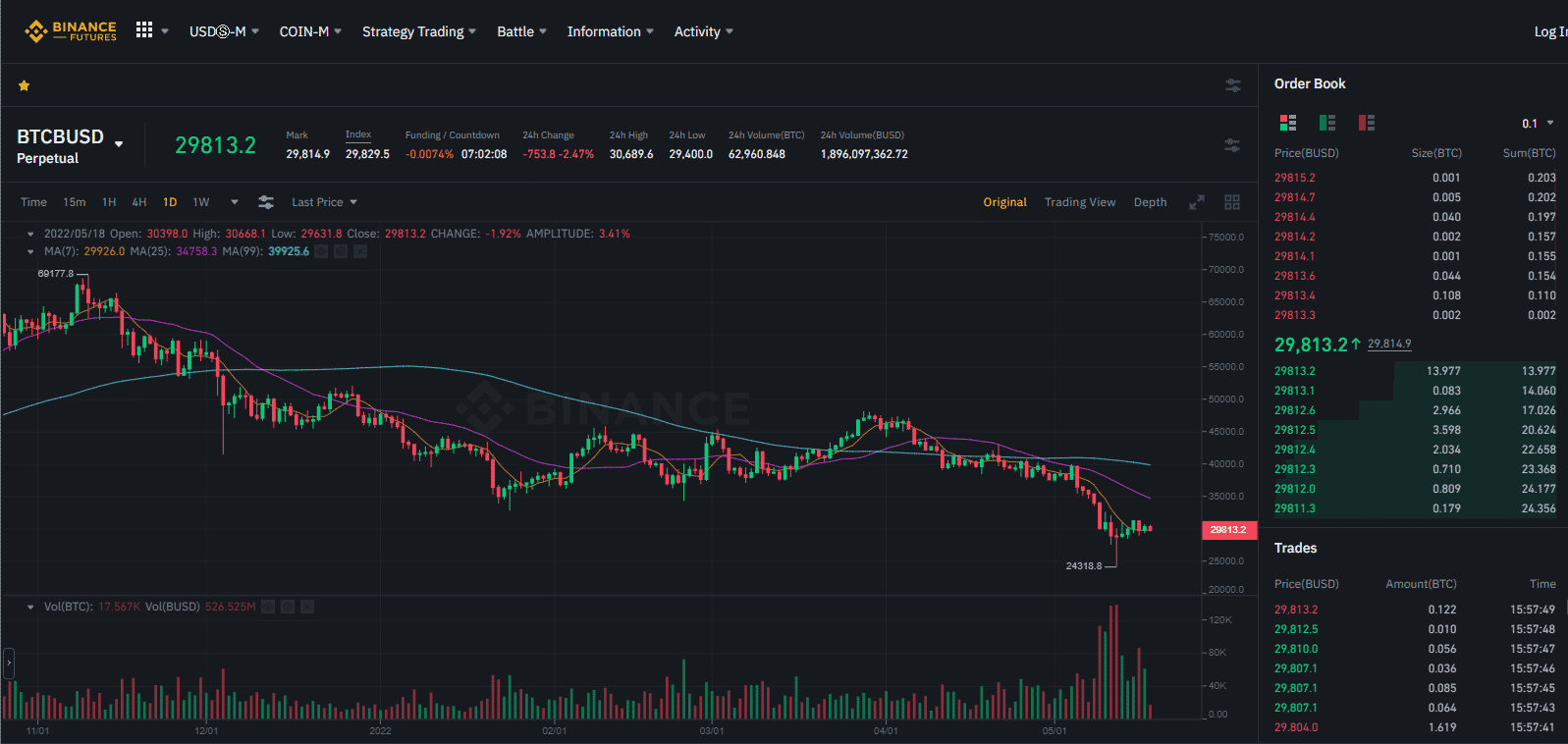Futures and CFDs are two different ways to trade a variety of financial markets, such as stocks, currency, indexes, commodities, bonds, and more. CFDs are frequently thought to be more flexible than trading futures directly. Trading CFDs works similarly to trading futures in the underlying market; only you’ll be able to bet on rising or falling prices without having to take any of the risks that come with futures contracts.
Leverage trading can be applied to both of them. Leverage refers to using borrowed capital to make trades. Leveraged trading allows you to trade larger quantities by increasing your buying or selling power. So, even if your starting capital is small, you can leverage your transactions by using it as collateral. While leveraged trading might increase your potential gains, it also comes with a significant level of risk, particularly in the unpredictable crypto market.
Futures definition
These are regulated trading contracts in which two parties agree to buy or sell an underlying asset at a predetermined price on a specific date. The underlying asset in the case of bitcoin futures is bitcoin.
Futures allow investors to protect themselves against turbulent markets by ensuring that they can buy or sell specific crypto at a predetermined price in the future. Of course, if the price changes in the opposite direction, a trader may find up paying more for crypto than the market price or selling it for a loss.

In some cases, rather than directly buying or selling crypto, which requires setting up a crypto wallet and navigating through intricate exchanges, investors can use futures contracts to obtain indirect exposure to bitcoin and perhaps profit from its price moves. In many aspects, crypto futures trading differs from spot trading in that it does not require players to own any assets. Rather, traders look to buy or sell derivatives contracts, which represent the value of cryptos at a future date.
Trading with leverage
Futures trading allows for leverage of up to 90% to 95%. This means that a trader can invest in a futures contract for as little as 10% of the contract’s actual value. The leverage multiplies the effect of any price changes to the point where even minor fluctuations might result in significant profits or losses. As a result, even a minor price loss could trigger a margin call or forced liquidation of the position.
Due to the leverage used in futures trading, it is possible to lose more than one’s initial investment. On the other hand, it is possible to make huge earnings. The increased risk comes from the form and method of how futures contracts are traded, not from the real product a trader is investing in.
CFDs definition
A contract for difference is an agreement between a trader and a CFD broker in which the buyer agrees to pay the seller, the CFD broker, the difference in the value of a financial instrument between the time the contract opens and closes. CFDs enable traders and investors to profit from price movements without having to own the underlying assets.
The price change between the trade entry and exit determines the value of a CFD contract, not the asset’s fundamental value. This is done through a contract between the client and the broker, and no stock, FX, commodity, or futures exchange is used. Trading CFDs has a number of significant advantages that have contributed to the instrument’s enormous popularity over the last decade.
CFDs are used by traders to place bets. They have the option of betting on upward or downward movement. If the price of the asset rises, the trader who purchased the CFD will offer their holding for sale. The difference between the buying price and the sale price is added up. The investor’s brokerage account settles the net difference, which represents the profit from the trades.
On the flip side, if the trader believes the asset’s value will fall, he or she can open a sell position. The trader must purchase an offsetting transaction in order to close the position. The loss’s net difference is then settled in cash through their account.
Trading with leverage
In CFD trading, leverage is the ability to trade without paying for the full value of your position upfront. Instead, you pay a deposit known as margin. Leverage works in CFDs because you never own the asset you’re buying and selling. You’re merely betting on price fluctuations, so you don’t have to pay the full amount of your chosen asset upfront.
While leverage allows you to spread your cash more widely, keep in mind that your profit or loss will still be based on the total amount of your investment.
Example
You wish to buy 1000 shares of X, which is currently trading at $40 per share. You might buy 100 X CFDs or invest in X through share trading. In any case, your total position size would be (40* 100) $4000.
| CFD using leverage | Non-leverage | ||
| No of CFDs | 100 | No of CFDs | 100 |
| Total value of trade | $4000 | Total value of trade | $4000 |
| Deposit required to open trade (margin) | 20% | Deposit required to open trade (margin) | 100% |
| Total margin | $800 | Total margin | $40000 |
| Profit made | $100 | Profit made | $100 |
The margin needed for X is 20%. To execute your trade, you only need to deposit $800 using CFDs. Trading on leverage allows you to employ more funds elsewhere while maintaining the same profit.
Summary
CFDs and futures are two different ways to trade financial markets. Both of them can be traded with leverage. Leverage allows you to gain full market exposure for a little initial deposit. This can help you save money on your original investment, but because leverage can raise your profits or losses, it’s critical to manage your risk before entering a leveraged position.
